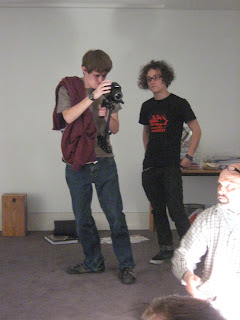
We arrived in Munnar on December 23rd to find the hotels full. It was the Christmas period and the Indian middle class were on holiday. We'd met a family from Assam on the train from Madurai, spending a couple of weeks touring a mix of holy and secular attractions. Arriving in the mountains we discovered that hill stations were particularly favoured by Indians for short breaks. Most were from other parts of Kerala and neighbouring Karnataka. Had the border with Tamil Nadu not been closed because of the dam dispute, we may not have found a room at all.
I spent the night in the worst room I can remember, right off reception and with a damp, smelly en-suite and a window with a view of a brick wall less than three feet away. The manager and the sweeper, an old smoker, slept on the floor of reception. Somehow, this being India, it felt perfectly natural and as a by-product the 10.30 curfew was rigidly enforced. The most memorable sound was that of the sweeper coughing, hawking and spitting at regular intervals through the night.
On Christmas Eve, while our bags were moved to a better room (in fact the best in the hotel had become available), we went out on a set tour. Exhaustion had allowed the manager to talk us into taking a Jeep tour with his friend, Rajeesh. This was very pleasant, and took in tiger and elephant hunting (with cameras). We saw neither but the fresh elephant dung was particularly impressive.
We were well behind schedule on the return journey and Rajeesh, who had been taking a leisurely pace, sped up in response to a phone call. So I was surprised when, two minutes from the hotel, he pulled over.
"Would you like to see this?" he asked.
'This' was a patch of waste ground and people standing around a fire. It was cold in the Jeep - the temperature had plummeted when the sun went down - and the fire was attractive. Rajeesh killed the engine and then I heard music. We walked closer and saw a band of three drummers and two horn players, a priest/MC, a sadhu (holy man), three men doing something with fire and a group of women dancing in a manner I associate with sub-Saharan Africa. ( They did not come across as demur Hindu women.) And around them all was a small crowd.
We had happened on a ceremony of some kind and I quickly decided not to take our my camera. This was partly to avoid causing offence but mostly because the sound was so amazing I wanted to record some. In my back-pack was my handy Zoom H4 and the clip contains that audio. The way the rhythm shifts back and forth is of particular interest. (You may want to roll off the bass a little.)































































